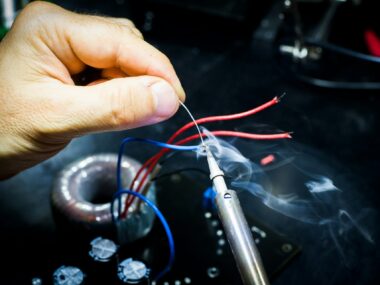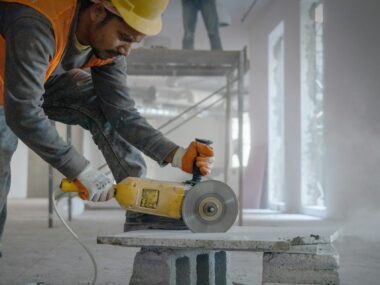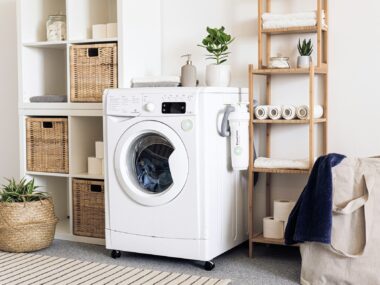Nothing disrupts a peaceful evening quite like the jarring sounds of a malfunctioning dishwasher. Whether it’s grinding, rattling, or producing an unusual humming noise, these disturbances often signal underlying issues that require immediate attention.
Understanding the root causes of dishwasher noise issues can save you time, money, and the frustration of dealing with persistent kitchen appliance problems.
Most homeowners assume that a noisy dishwasher automatically means expensive repairs or replacement. However, many common noise problems stem from simple maintenance oversights or minor adjustments that you can address yourself.
Before calling for professional dishwasher repair services, several troubleshooting steps can help restore your appliance to quiet operation.
The key lies in systematic diagnosis. Different sounds indicate different problems, and identifying the specific type of noise your dishwasher produces will guide you toward the most effective solution.
From loose components to clogged filters, most noise-related issues have straightforward remedies that don’t require extensive technical expertise.
Identify the Source of Dishwasher Sounds
Common Noise Types and Their Meanings
Different sounds from your dishwasher provide valuable clues about potential problems:
- Grinding noises typically indicate food debris in the disposal or worn motor bearings
- Rattling sounds suggest loose spray arms, dishes, or internal components
- Humming or buzzing often points to water flow restrictions or pump issues
- Clicking sounds may signal electrical problems or timer malfunctions
- Squealing noises usually indicate worn door seals or hinges needing lubrication
Timing Matters
Pay attention to when these noises occur during the wash cycle. Sounds that happen immediately upon startup often relate to water inlet issues, while noises during the wash cycle typically involve spray arms or motor problems. End-of-cycle sounds might indicate drainage or drying system complications.
Location-Specific Diagnosis
Walk around your dishwasher while it operates to pinpoint where sounds originate. Bottom-mounted sounds often relate to the motor or pump assembly, while upper sounds typically involve spray arms or door mechanisms. Side-mounted noises might indicate loose panels or damaged insulation.
Check and Secure Loose Components
Inspect the Dish Rack System
Start by examining the dish racks for any loose or damaged components:
- Remove both upper and lower racks completely
- Check all wheel assemblies and replace any cracked or missing wheels
- Tighten any loose rack adjuster clips
- Ensure rack stop clips are properly positioned
- Test rack movement to confirm smooth operation
Examine Internal Hardware
Several internal components can create noise when loose:
- Spray arm assemblies: Remove and inspect for cracks or clogs
- Filter housings: Ensure proper seating and secure attachment
- Door panel screws: Tighten any loose fasteners around the door frame
- Control panel mounting: Check for secure attachment to prevent rattling
Verify Proper Installation
Sometimes noise issues stem from improper dishwasher installation:
- Confirm the unit sits level using a bubble level
- Check that all mounting brackets are properly secured
- Ensure adequate clearance around the unit
- Verify that drain hoses aren’t kinked or improperly positioned
Clean Clogged Filters and Drain Components
Filter Maintenance Protocol
Clogged filters force your dishwasher to work harder, creating additional noise during operation:
- Locate the cylindrical filter at the bottom of the tub
- Twist counterclockwise to remove (most models)
- Rinse under hot water while scrubbing with a soft brush
- Check for tears or damage that might require replacement
- Reinstall by twisting clockwise until snug
Drain System Cleaning
Food particles and grease buildup in drain components can cause unusual sounds:
- Remove the bottom dish rack for better access
- Clear any visible debris from the drain area
- Use a mixture of baking soda and vinegar to break down buildup
- Run an empty cycle with dishwasher cleaning solution
- Check the garbage disposal (if connected) for proper operation
Spray Arm Maintenance
Blocked spray arms create pressure imbalances that generate noise:
- Lift out the removable spray arms
- Use a toothpick to clear individual holes
- Soak in warm water with mild detergent
- Check for warping or cracks that affect water distribution
- Ensure proper reinstallation and secure attachment
Adjust Water Temperature and Pressure Settings
Optimal Water Temperature
Water temperature significantly affects dishwasher performance and noise levels:
- Set your water heater to 120°F (49°C) for optimal results
- Test the water temperature at the kitchen sink before running cycles
- Allow hot water to flow until it is steamy before starting the dishwasher
- Consider installing a water heater booster if the temperature remains insufficient
Water Pressure Considerations
Both high and low water pressure can cause operational noise issues:
- High pressure may cause excessive vibration and spray arm spinning
- Low pressure forces pumps to work harder, creating additional noise
- Normal residential water pressure should measure 20-80 PSI
- Install a pressure regulator if readings exceed recommended levels
Inlet Valve Inspection
The water inlet valve controls water flow into your dishwasher:
- Listen for unusual clicking or buzzing from the valve area
- Check for proper electrical connections
- Ensure adequate water supply pressure
- Replace faulty valves that create excessive noise during filling
Replace Worn Door Seals and Gaskets
Door Seal Assessment
Damaged door seals create multiple problems, including increased noise:
- Inspect the rubber gasket around the entire door perimeter
- Look for cracks, tears, or areas where the seal has pulled away
- Check for food debris or mineral deposits affecting seal integrity
- Test door closure to ensure proper compression
Replacement Process
When door seals require replacement:
- Purchase manufacturer-specific replacement seals
- Remove the old seal by pulling it out of the retaining groove
- Clean the groove thoroughly before installing the new seal
- Work the new seal into place, ensuring even distribution
- Test door operation and check for proper sealing
Hinge and Latch Maintenance
Door hardware components also contribute to operational noise:
- Apply food-grade lubricant to hinge pins and pivot points
- Check door latch alignment and adjustment
- Tighten any loose hinge screws
- Replace worn door springs that affect closing tension
Inspect the Wash Motor and Pump Assembly
Motor Mount Evaluation
Loose or worn motor mounts create significant vibration and noise:
- Access the motor area (may require removing the front panel)
- Check all mounting bolts for proper tightness
- Inspect rubber motor mounts for cracking or deterioration
- Look for signs of motor movement during operation
Pump Component Assessment
The wash pump circulates water throughout the dishwasher system:
- Listen for grinding or squealing sounds from the pump area
- Check for foreign objects lodged in the pump housing
- Verify proper impeller operation (professional assessment recommended)
- Consider pump replacement if internal damage is evident
Professional Service Indicators
Some motor and pump issues require professional dishwasher repair:
- Electrical problems affecting motor operation
- Internal pump component failure
- Motor bearing replacement needs
- Complex diagnostic requirements beyond basic troubleshooting
Similar to dryer repair situations, certain kitchen appliances problems exceed typical homeowner capabilities and warrant professional intervention.
Take Action for Peaceful Kitchen Operations
Addressing dishwasher noise issues promptly prevents minor problems from escalating into costly repairs. Most homeowners can successfully resolve common noise problems using basic tools and following systematic troubleshooting approaches.
Regular maintenance, including filter cleaning and component inspection, significantly extends appliance life while maintaining quiet operation.
Start with the simplest solutions first. Check for loose components, clean filters, and verify proper installation before moving to more complex diagnostics.
Document any unusual sounds or patterns you observe, as this information proves valuable if professional service becomes necessary. Remember that persistent or worsening noise problems often indicate underlying issues requiring prompt attention.
Don’t ignore warning signs, as continued operation of a malfunctioning dishwasher can lead to water damage or complete system failure. When basic troubleshooting doesn’t resolve the problem, contact qualified appliance repair professionals to prevent further complications.






